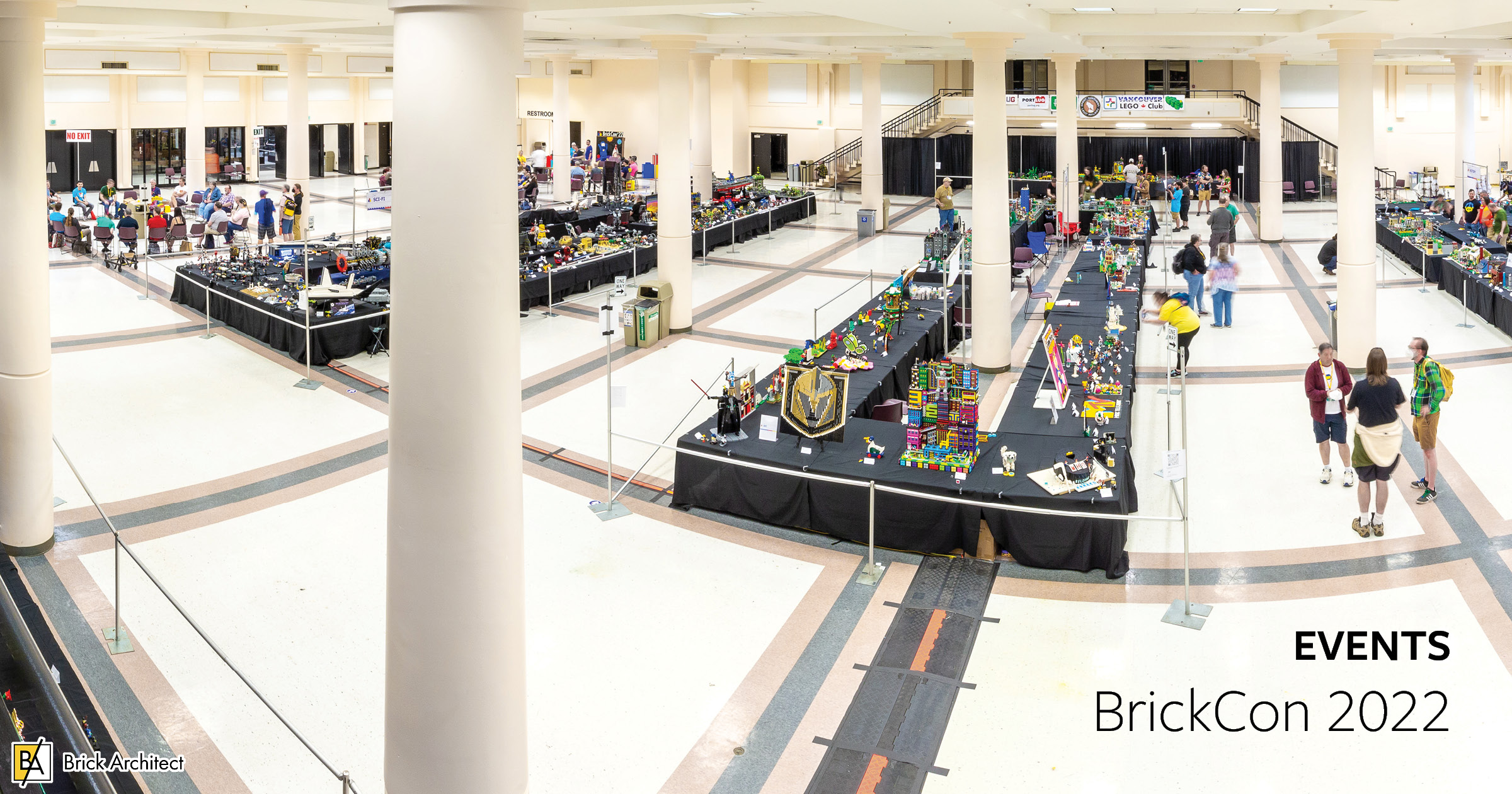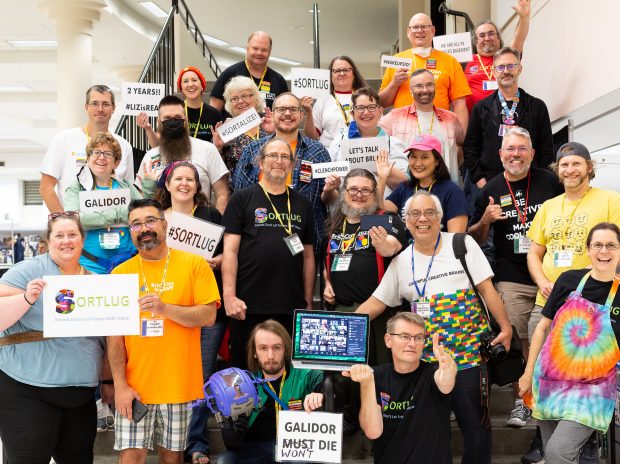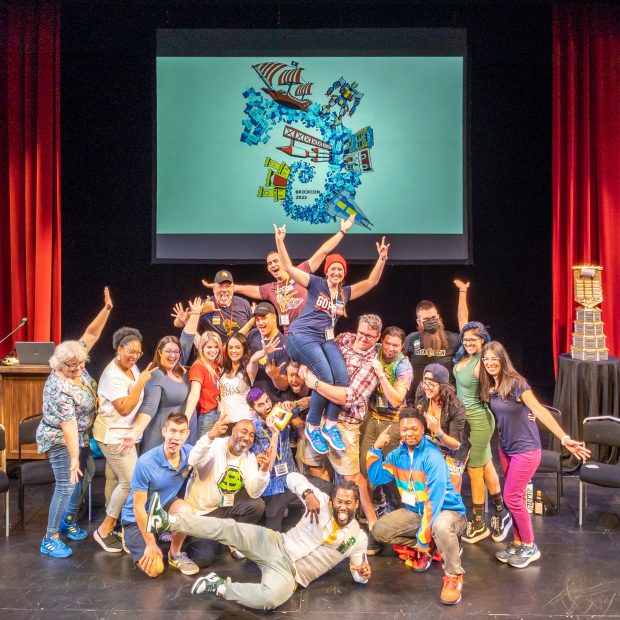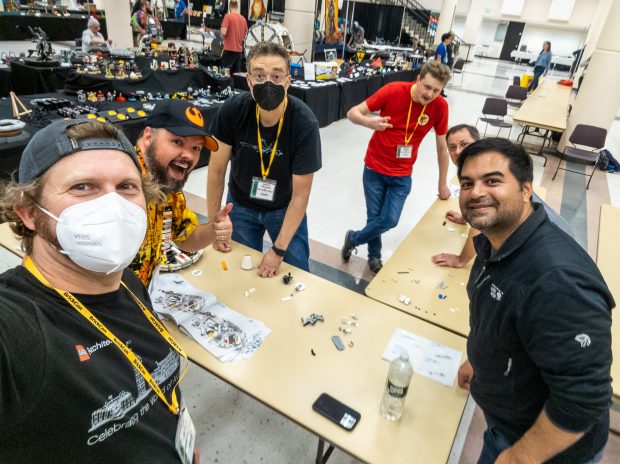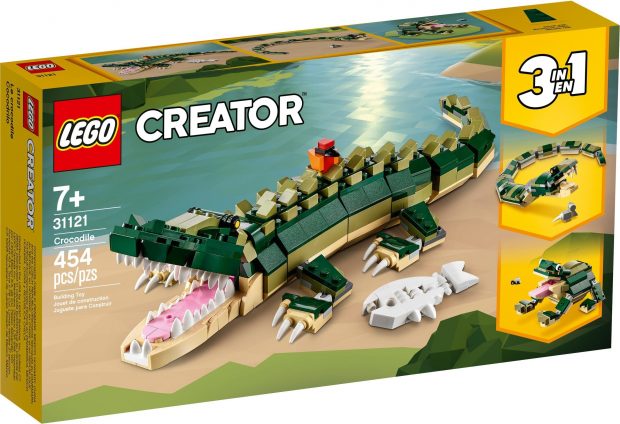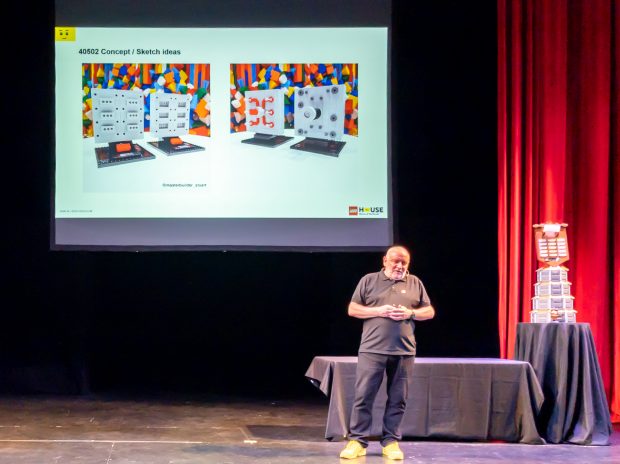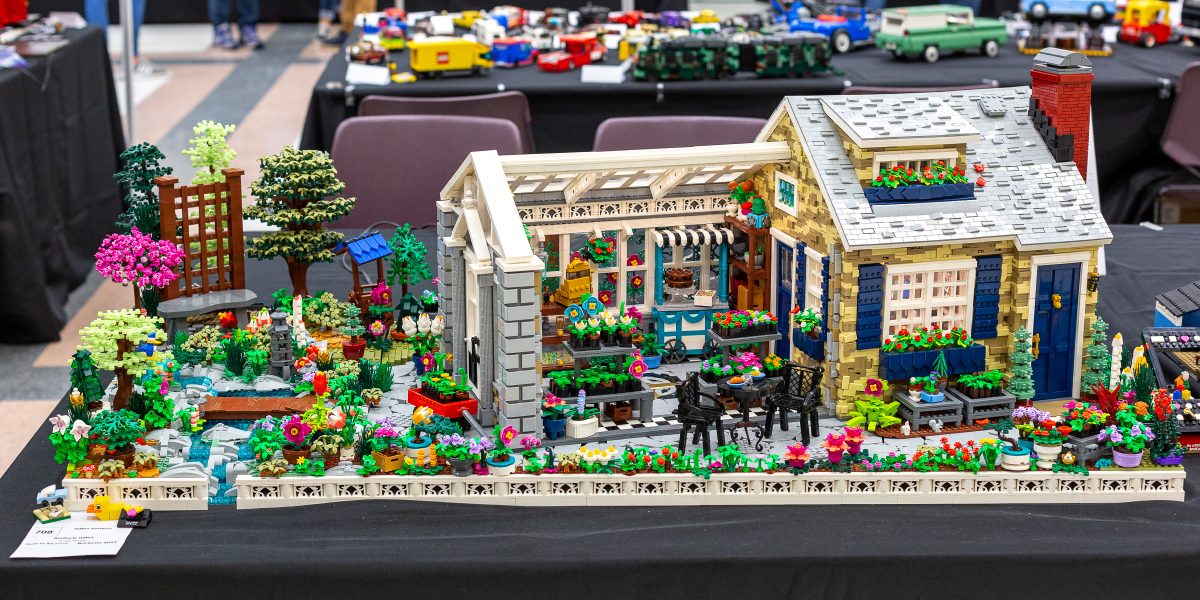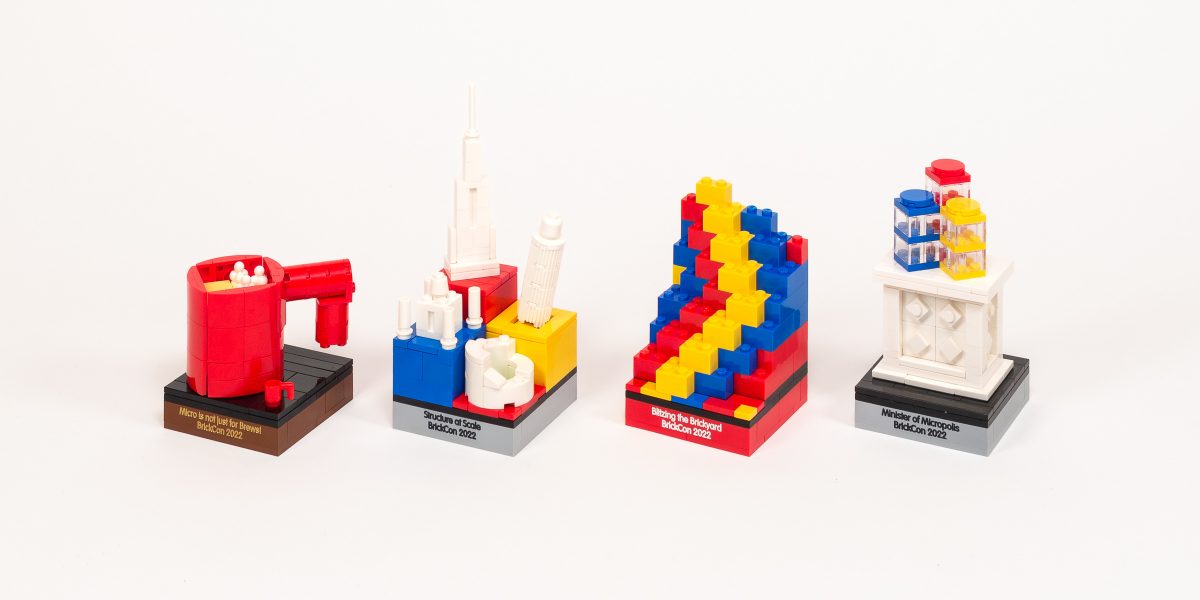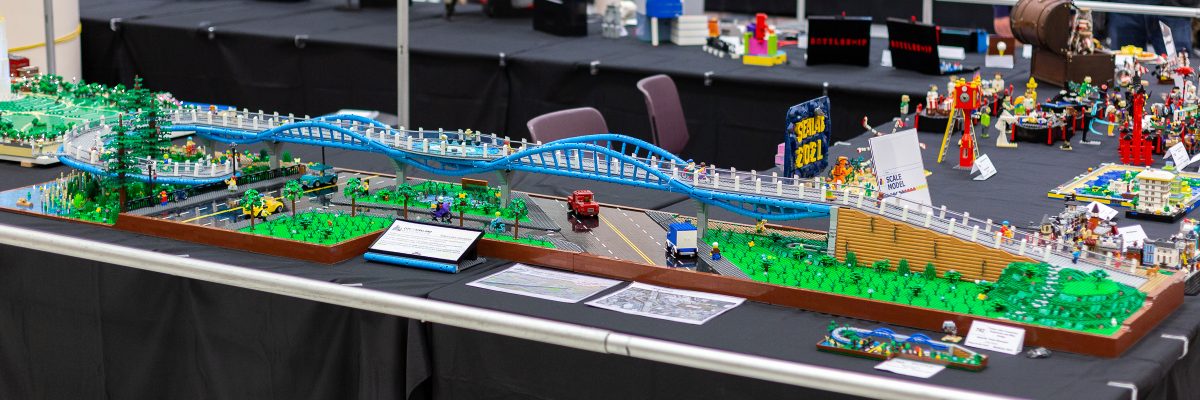BrickCon 2022 LEGO Convention
This year’s convention felt like a homecoming of sorts — packed with positive energy, even more amazing MOC’s, a vibrant after-hours scene, and TV star vibes from a ton of LEGO Masters contestants.
This article is longer and more loosely edited than most of the articles on this website. I thought it was important to give a better sense of the “feel” of the event, rather than a more clinical, well-edited summary.
LEGO Masters… in real life
A whopping 17 of the 24 participants in the latest season of LEGO Masters USA attended BrickCon this year. We also had a few participants from earlier seasons in attendance, as well as Robin Sather who is the Brickmaster (judge) for LEGO Masters New Zealand. It served as a ‘family reunion’ for them, and gave AFOLs like me a chance to learn a lot more about what happens behind the scenes.
One of the first things I noticed when meeting contestants from this and previous seasons is that they are a lot louder and more outgoing than many AFOLs. When we learn more about how contestants are cast for the show, it makes a lot more sense…
Teams are ShowPonies. You need a ‘Pony’ (the one with the building skill) and a ‘Show’ (the one that makes the noise). That’s not to say Shows can’t build or that Ponies can’t be entertaining, it just seems that most LM teams have one dominant Show and one dominant Pony.
Stephen Cassley / The Firefighters
Stephen wasn’t alone in explaining how the casting process goes out of it’s way to cast dynamic personalities that make for good television. Contestants are definitely selected not only for their technical ability but also for their on-screen presence. Unfortunately, this means that a lot of extremely talented but introverted builders are unlikely to appear on the show.
Fun and Games
As with previous years, there are a number of building challenges that AFOLs can participate in outside of public exhibition hours. I was able to participate in three of the games: Blind Build, Individual Speed Build, and the Team Speed Build. This year I want to focus on the Team Speed Build since it was my favorite game this year, and there are some strategies that are worth discussing when teamed up with six strangers to build a LEGO set as fast as you can…
The organizers typically make it harder by opening all the numbered bags and dumping them into a larger bag. Here are a few strategies that I’ve employed in past years to be more competitive…
Team Speed Build Strategies
- Invest time up-front trying to parallelize the build process. This includes tearing the building instructions apart, with stacks of pages for each separable sub-assembly.
- Organize the parts up front, and organize them more whenever there is downtime. Broad categories like the ones recommended in my LEGO Brick Labels collection are intuitive for most builders.
- Identify the longest non-parallelizable section, and have your fastest builder work on it from the start. Other players can get parts for that builder in advance.
Most importantly, you want to have the very fastest builders on your team. We didn’t have a ringer on our team and came in second place (by a fair margin — I think we were the only other team to actually finish).
After Hours
A memorable Keynote Presentation
The Keynote Presentation was by Angus MacLane, long time creative talent at Pixar and director of the recent film “Lightyear”. His presentation was stunning, filled with deep cuts about nerdy aspects of the LEGO hobby such as the idiosyncratic geometry of the LEGO brick, and practical suggestions to pack fun and storytelling details into your creations.

What could be better than a stunning keynote presentation by Pixar’s Angus MacLane? How about a jet-setting introduction by Douglas Hughes (who happens to own this amazing Buzz Lightyear costume).
The thrust of the presentation was about creativity and storytelling. He presented us with his tried-and-true “S.U.C.C.S” method — a tongue-in-cheeck analogy built from serious principles to make better models.
The S.U.C.C.S. Method:
- Story – What is your story, what makes it funny, and why should I care?
- Utility – Can you incorporate play functions? (He also described this as ensuring the model is “Toyetic”.)
- Color – Make the color serve your story, can you make it pop? (In his case, he tends to do rough drafts in gray and add color later.)
- Clarity – How can you tell the story with the fewest pieces?
- Style – Does it have a signature style?
He continued with a selection of examples from his own LEGO creations, including his design for the “Cube Dudes” (the obvious precusror to the LEGO Brickheadz theme) and his winning Wall-E LEGO Ideas project. Even more interesting was how Angus built rough drafts of characters and vehicles for Pixar films, then brought them in to the office to provide inspiration for the artists.
Lots to learn
The keynote was just one of many opportunities to learn about the LEGO hobby from fellow AFOLs, and from a few LEGO Employees who gave talks about interestign aspects of their jobs. Most presented from their homes in Billund, but we even had two LEGO employees who traveled to Seattle to be with us in person.
Official 3d-printed LEGO Parts
A hot topic at the Skærbæk Fan Weekend this year is a brand-new LEGO part (#92898 Pull-Along Duck) which is produced using an “additive manufacturing process” — more commonly referred to as 3D Printing. This is much slower than the injection moulding process used to produce most LEGO bricks, but it allows The LEGO Group to produce parts with play functions buried inside of the part that would be difficult or impossible to produce otherwise. (In the example of the Duck, using an injection moulding process would require multiple moulded parts that are carefully snapped, glued or fused together during the manufacturing process.)

is the most widely available official 3d printed part, since it was available to guests at Skærbæk Fan Weekend 2022.
In the photo on the upper right, you can see the kinked rear axle which connects via the dogbone piece to make the beak open and shut. The lower left shows the LEGO Part ID which is visible on the part exterior, and the lower right photo shows that each duck has a unique code, allowing The LEGO Group to uniquely identify each duck. While they have not stated as such, I wouldn’t be surprised to see multiple minor variations on these 3d printed parts, with The LEGO Group using these unique ID’s to determine which variants are more prone to failure. (Variations could include subtle differences to the design of the hidden functions, different plastic formulations, or even different settings on the 3d printing equipment such as increasing or decreasing the print speed or resolution.)
While the duck is getting all of the attention because it is cute and a few hundred of the most dedicated LEGO fans just got the exclusive part for their own collection, it is actually the second official 3d printed part. #66237 Drafting Arm was included in the 2019 LEGO Inside Tour set, so there are only a few dozen of these pieces out there. What I did not realize when that part was announced is that it also has a play feature — the drafting arm can bend a few degrees from the clip holding it in place, thanks to a tiny “s-shaped” plastic spring that is hidden inside the connection. This is yet another example of a part that would be difficult to produce using traditional injection moulding techniques, but relatively straightforward for a 3d printing process.

#66237 Drafting Arm was the first official 3d-printed LEGO element. It has a small “s” shaped spring that allows the arm to bend after being clipped into place.
Before you get too excited, be sure to notice how the 3d printed parts are impressively detailed, but they do not have the same glossy finish that we are used to seeing with injection-moulded LEGO bricks. It’s also important to notice that neither of these parts has a Stud or Antistud connection — I suspect that even with the best 3d printing technology in the world, they are still struggling to get perfect clutch power with 3d printed parts.
Designing exclusive sets for The LEGO House
I especially enjoyed hearing about the challenge he faces every year in picking a model that makes sense as a LEGO House exclusive. It needs to be obscure enough to have limited mass-market appeal, while being immediately recognizable and sought by people visiting the museum.
Designing LEGO Moulds
Speaking of moulds to produce LEGO bricks, someone has to design the parts to ensure a perfect result when the mould is in use. We learned from Tore Christensen & Andreas Malling Jensen, who are both Element Designers with a background in Integrated Design. Their role on the Novelty Element Design team is to refine the design of new parts which have been proposed to ensure that they can be manufactured with the highest quality.

You can see that the improved model (left) has reduced deflection, which is represented using blue and red colors.
They used two real-world examples to explain the ways that they fix issues with existing machinery and prevent issues from arising before the mould is created in the first place. For the first example, Tore showed a DUPLO alligator which was warping when it cooled and exited the mould, making the part difficult for young builders to attach to a studded surface. They used a software suite to simulate adding shallow ribs on the underside of the mould, and predict the effect of different sized ribs to decide on the final solution. With these tools, they were able to reduce the warping to well within their tolerances by adding a relatively small rib that kids won’t even notice.

The part on the left was having an issue where plastic was not filling the top of the two ribs, so they modified the part on the right to change how plastic flows through the mould.
The second example involved a potentially explosive issue with a new mould. It turns out that plastic is injected under extremely high pressure, and a pocket of air that forms within the mould can result in extreme pressure in that spot that can “burn” the brick or even cause the mould to explode. They are often able to detect when a mould for a proposed part will have this issue, and modify the mould before it is produced to reduce the risk of failure. In the specific example they showed, they needed to cause plastic to fill all the way to a corner of a ridge on the interior of the part before the plastic changes direction to finish filling the mould. By making the rib slightly narrower immediately after the problem area, the plastic will fill all the way into the corner before flowing to the next area in the mould.
Building the National Mall in Microscale
Another excellent talk that I wanted to mention was Wayne Tyler’s in-depth explanation of the process he went through to build a massive microscale re-creation of the National Mall in Washington D.C. He presented it as a blueprint for creating a faithful LEGO re-creation of any city, all the way down to extracting topographic data so that you start building on an accurate representation of any hills or terrain features.

“If it looks like, it IS right.” —Wayne Tyler on building scale models of the National Mall in Washington, DC.
One of the most important topics he handled was scale, since it is important to establish a consistent scale to use throughout the model. In his case, the scale for the model is derived from the LEGO Architecture model of the Lincoln Memorial, using the length of the front facade as a ruler to measure all of the other buildings up and down the National Mall. I also appreciate his remider that the point of his model is not to get the scale of every feature exactly right, but to ensure it looks right. After all, the reason he built the model is to help people better understand and appreciate this important place in our nation’s story.
Peer Review with Kyle Keller
Giving back
One of the ways that I ususally give back to the BrickCon event is by giving a talk about a nerdy topic like LEGO Storage, or last year’s talk on LEGO Parts Anatomy. This year I was too busy to prepare a talk, but I was a ‘Theme Coordinator’ for the expanded Scale Model theme.
The Theme Coordinators job is to ensure the LEGO models displayed within the theme are well organized, with related models near one another to help viewers see how different builders approach similar subjects. I stuggled a bit to ensure a coherent display given the broad scope of models that could fit into the scale model theme.
After wrapping my head around the submissions, I decided to organise them as follows: a selection of large-scale Architecture models, followed by smaller Architectural models, then a small Micropolis display, followed by Micro BrickCon, a selection of brick-built versions of everyday objects, and finally a selection of vehicles and trains.
My other responsibility is to determine which of the models in your theme will win each of the pre-determined awards for your theme. The awards are a bit different every year to keep builders on their toes. Theme coordinators are also responsible for helping to build all of the trophies which are given out for each theme. I was able to build four of the seven trophies for my theme.
Inspiring younger builders
Some AFOLs spend the entire day on Saturday and Sunday telling guests about their models, but I tend to use that time to attend talks and catch up with fellow builders. This year was a bit different, since I walked through the entire show during public hours with my wife and 4-year old son.
While it was a bit overwhelming for him, it was so much fun to see which models caught his eye. As you might expect, the models with power functions, bright colors, or a massive scale were his favorites.
This massive brick-built model of a pedestrian bridge being built a few miles from our home was probably his favorite model overall. He immediately recognized the spiral section of the bridge, which we see once a month on bike rides. Best of all, the first thing he did after getting back from BrickCon was to build his own “DUPLO BrickCon”, complete with a display table, his own bridge MOC, and a spaceship.

Paul Hetherington reminds us he is the king of color with this enchanting model based on Disney’s recent movie Encanto.
Of course, if you want to really catch people’s attention, you can use all of these tricks in a single model, like Paul Hetherington’s model based on Encanto. It is big, it is very colorful, and the roof tiles dance gently and the blinds open and close to catch your attention.
What is an AFOL?
A perennial topic that I couldn’t escape this year centered around who deserves to be called an AFOL, or Adult Fan Of LEGO? I’ve never put much stock in the question because it didn’t seem very important, but I have learned over the years that the lack of a clear definition causes adult builders some anxiety because they are unsure whether they deserve to be called an AFOL since they are pretty casual fans or don’t build MOCs. Issues around identity can be tricky to get right and can make people feel excluded.
The topic was confronted directly by Jordan Paxton, the Community Manager at The LEGO Group who works with Recognized LEGO Fan Media outlets (like Brick Architect) as well as recognized online communities and LEGO user groups. when asked who The LEGO Group sees as an AFOL. He explained that he partnered with Tormod (former head of AFOL Engagement) to define who The LEGO Group sees as an AFOL and concluded that…
An AFOL is someone with a strong emotional connection to the LEGO Brand, Brick, and Company that is often irrational and resistant to change.
Jordan Paxton / The LEGO Group
This also came up when we talked with participants in the LEGO Master show. It’s very interesting to learn more about each of their backstory. Some of them are long time AFOLs as classically defined: builders who create massive MOCs of their own design, while others are simply enthusiastic LEGO builders who build a few LEGO sets a year.
This tension was best explained by Emily, the mom who teamed up with her son Liam this season. Having coached First LEGO League for several years, Emily clearly has a deep knowledge of LEGO but she expressed doubt about whether she is in fact considered an AFOL. If we take Jordan’s definition at face value she certainly is… Her fondness for the brick and her enthusiasm to participate in a LEGO TV show makes this clear — She definitely qualifies as an AFOL!
One of the things I love about the definition Jordan provided is that it reflects honestly on the fact that our love of the LEGO brick is not always rational. Critically, it is also an expansive enough definition to include adult fans who might only buy a few sets a year and don’t participate in online communities or conventions. I am hopeful that an inclusive definition will help newcomers feel more welcome in our hobby!
Closing Thoughts
As I have grown to expect, the models on display were excellent and I learned a lot in the various talks and presentations. But most of all, I enjoyed catching up with old friends and making some new ones. I hope you have enjoyed this rambling journey through my key takeaways from BrickCon 2022.
I am especially hopeful as we prepare for a new chapter in the BrickCon journey next year… we’re moving to a new venue in Bellevue, WA — The Meydenbauer Center! Along with the new venue we have a new date; the public expo will be on Saturday September 9th and Sunday September 10th.
The new venue offers several key advantages for the AFOL convention and for the general public. It is a slightly larger space, but it will allow us to display a lot more models since there aren’t any massive concrete columns breaking up the space. Hotels should be a bit cheaper, it’s walking distance from the LEGO Store at Bellevue Square Mall, and parking will be easier and cheaper. Most importantly, it is closer to my house, which I love. I hope that I will see you at BrickCon 2023!

